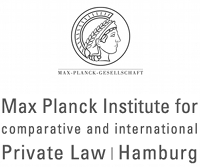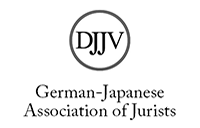Abgrenzungsprobleme des Haftungsumfangs bei Atomschäden
Abstract
Among the tasks imposed on us by the catastrophe of Fukushima, this article deals with the large-scale compensation for damages that is now becoming apparent.
The Act on Compensation for Nuclear Damage (hereinafter: The Act) is applicable to damages in such a nuclear accident. This article highlights the characteristics of the Act in comparison to the general law of torts’ compensation for damages, including the Act’s concentrated and unlimited duty to pay compensation regardless of fault. In addition, its execution involves special procedures (such as special measures for damage compensation and, if help from the state is necessary, the Organization for Assistance in Compensation for Nuclear Damages, etc.).
To determine the scale of liability in practice and to solve conflicts, the Commission and the Center for Solving Nuclear Disputes have been set up. In accordance with its tasks, the Commission issues general guidelines that contribute to overcoming out-of court conflicts among the concerned parties and arranges settlements between them. For substantive determinations, an adequate causal connection is decisive; this concept holds a key position in the guidelines of the Commission (as well as in the relevant precedents). Damages with an adequately causal connection to the accident are acknowledged to be included in the scale of liability.
The concept of adequate causation is borrowed from the context of the general law of torts, which presupposes intent or negligence. Pointing out that this concept does not imply causation in itself (in the sense of the conditio formula) but rather enriches such causation with the normative judgment of the scale of liability became the foundation for later theories.
Initial problems involve a certain category of compensation for nuclear damages: damages caused by rumors. In this context, the repeatability is questionable – that is to say, the answer to whether the same situations would arise out of the same conditions (with a high degree of likelihood). Different points need clarification, and thus there are a certain variety of opinions regarding the necessity of a strong scientific proof for the repeatability, or the question about repeatability as a prerequisite of actual or adequate causation. In the decisions issued to this point, repeatability seems to be dealt with as a precondition of adequate causality and judged in harmony with predictability. However, it remains unclear whether attention was also paid to the fact that predictability is a prerequisite for negligence, whereas the liability to pay nuclear damages is indeed independent of fault. In addition, discussion is necessary regarding the understanding of the term “repeatability.” In case of damages through a rumor, the probability of occurrence regarding the phenomenon of purchasing restraint of one single consumer within a set differs from the phenomenon of purchasing restraint of a certain portion of consumers within the set. Therefore, even when taking the same facts as a basis, the judgment of repeatability depends on the choice of the point of reference.
Furthermore, problems have been observed with long-term consequences for which it is difficult to scientifically prove a causal connection. Especially those long-term consequences that have not yet been sufficiently scientifically resolved and whose probability of occurrence will not greatly increase in the future (such as possible consequences of long-term internal exposure to radiation in small doses) raise important questions regarding the acknowledgment of a causal connection and the determination of the sum of liability.
The aforementioned problems arise because many questions are still unanswered. This applies to the meaning and function of the adequate causal connection (and the repeatability), the characteristics and degree of proof for causality, the division between the determination of causality and the scale of liability, as well as the reflection of causality in calculation of compensation. However, the relevance of the current situation will certainly contribute to the solution of these remaining problems.
(Transl. by the Editors)






